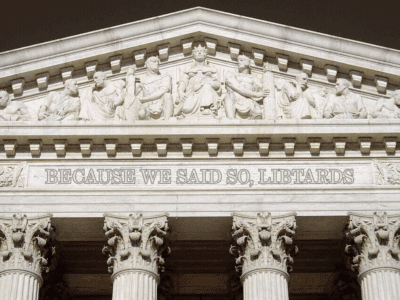Fancy Dancing on the Appalachian Trail
How to Use Textualism to Evade Statutory Texts
The Supreme Court’s decision in Cowpasture case allows gas pipelines to cross the Appalachian trial. The ruling didn’t get much attention because of its timing. It came down the same day as Bostock, which outlawed employment discrimination against gays and transsexuals. Bostock featured a big battle over the meaning of textualism. But Cowpasture was also a case about textualism.
The opinion was written by uber-textualist Clarence Thomas. The statutory text was actually quite clear — but in the opposite direction from Thomas’s ruling.
Three things were undisputed. First, Congress gave Interior Department to manage the Appalachian Trail, which was then delegated to the Park Service. Second, land in the National Park System is defined as any land managed by the Park Service. And third, no pipelines can be built across lands in the National Park System. Logically, since the Trail is managed by the Park Service, it’s part of the Park System. And since it’s part of the Park System, no pipelines are allowed. QED.
So how did Thomas get around the plain language of these laws. Simple: He said that when Congress created the Appalachian Trial, it didn’t transfer land to the Interior Department, but only an easement. If, like most members of Congress, you’re not a lawyer, you might be forgiven if this term doesn’t ring a bell. An easement is the right to pass over land — for instance, the power company might have an easement to run a power line behind someone’s house.
This is clever, but not very convincing. Calling something an “easement” over property makes sense only if the property is owned by someone else. I don’t need an easement to cross my own front yard. And all the property involved in the Cowpasture case is owned by the same entity: the United States government.
It’s hard to imagine that when Congress passed a statute referring to lands that anyone had in mind an analogy to fee simple ownership versus easements. There’s nothing in the language of the law to clue them in. “Land” is a non-technical term with a common sense meaning, not a legal term of art.
Finally, the Appalachian Trail isn’t remotely like a sidewalk. It’s not just a way to get people or objects across land. The whole point is to connect people to the land around the Trail.
Textualists are actually quite good at this fancy footwork. For example, the Clean Water Act extends federal jurisdiction to the “waters of the United States.” Rather than giving this language the broad interpretation it obviously calls for, Scalia came up with a theory that it really meant very little. Similarly, the Clean Air Act defines pollutants as including anything emitted into the air, but Scalia had a theory why, despite the plain language, greenhouse gases aren’t included.
All of this confirms that textualism is no more constraining than any other approach to interpreting statutes. Whatever other arguments you can make for textualism, it is no more capable than any other approach of making statutory interpretation easy or obvious.







Reader Comments